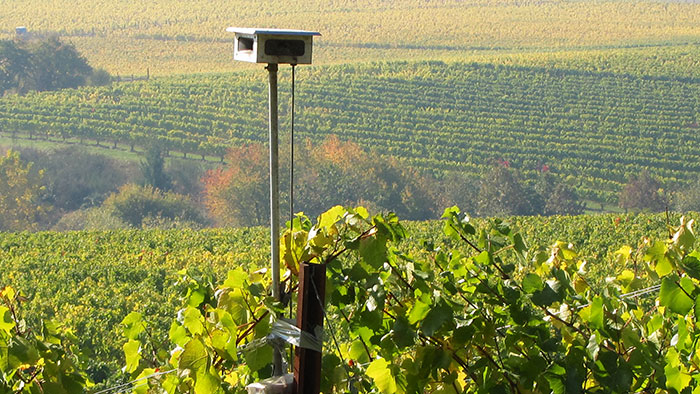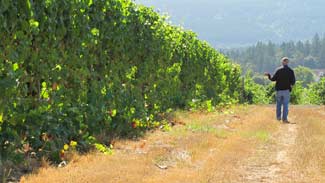“Organic is growing. Biodynamic is growing. The LIVE program is growing. Sustainability is not just one program or orthodoxy winning the battle, but we are all on the same train heading in the same direction, we have just all chosen to sit in different cars.” […Despite some differences between programs] “90% of what we believe is the same across all of the sustainability programs.”—Ted Casteel, founder of the LIVE program that serves the Pacific Northwest region.
With advanced degrees in European History, Ted Casteel and his wife lived in France and Italy for 18 months before moving to Michigan, and teaching history at a local university for several years. A native of Oregon, when Dr. Casteel decided to relocate his family back to his home state, it meant making a career change.

Having developed an appreciation for wine while living in Europe, Casteel decided to enroll in a one-year enology program at UC-Davis in Northern California. In 1977 after completing the enology program, the Casteel’s purchased a property near Salem, Oregon, and shortly after began to establish their Bethel Heights Vineyard.
The idea for the LIVE program (Low Input Viticulture and Enology) came about in the early 1990’s when it became clear to Ted Casteel there needed to be both an education and independent certification program based upon solid, science-based principles to promote sustainability practices to other producers. Casteel believes that the Oregon wine industry benefits as a whole when its individual producers participate within the framework of one of the existing certifying programs, be it organic, biodynamic, or the LIVE program. “In the long run we will have healthier farms and a healthier industry if we are successful. The goal in the end is to enroll everybody, and we are 40% of the way there [for the Pacific Northwest region],” said Casteel.
Since 1998 when the LIVE sustainable wine program began, it has continued to flexibly evolve based upon 3 foundational principles:
- A reduction in the use of off-farm inputs such as pesticides, fuel, fertilizers, etc.
- Promoting biodiversity of life including vibrant life within the soils.
- A certification process that holistically applies to the entire farm and winery, not just the vineyard itself.
During the interview, Dr. Casteel provided several examples of how the LIVE program empowers producers to more cost-effectively and ecologically deal with challenges, including pests. As he explained, mites are present on most vineyards in the region. On his vineyard, there are two types that can be particularly troublesome. The LIVE program, because it deals with the whole farm, requires small amounts of land be set aside as ecological compensation areas to include flowering plants that attract beneficial insects. The blackberry blooms attract a beneficial mite (phyree) on his property that feeds vociferously on the predatory mites, while not eliminating the pest mites entirely, they help keep the predatory mite populations under control without the need in this instance for costly spraying.
The LIVE program is not an end process in itself, and what Ted Casteel hopes to leave for prosperity, he says,
“At the end of my days here, that I will leave this farm a more sustainable place than it was when I started, and my kids will thoroughly understand this is not an endpoint but a process you learn, its an educational program more than anything else and its always challenging. Every year brings with it a new pest, a new challenge, something that we can’t really foresee, that we have to have a way of dealing with, a method of dealing with it, and that’s what the LIVE program tries to do.”
Visit Yamhill Valley Wines for their “Wines of the Valley” series that features the history, quality and diversity of the Yamhill Valley’s flourishing wine industry. For the introductory video, along with the video series list, check out the first post on CUPS: The Yamhill Valley Wine Region of Oregon
Most of the videos featured on Cooking Up a Story were produced, filmed, and edited by Rebecca Gerendasy. Fred Gerendasy contributed as a writer to many of the posts and occasionally as the interviewer. Visit Rebecca Gerendasy Clay – Art and Fred Gerendasy Photography to see their current work.

